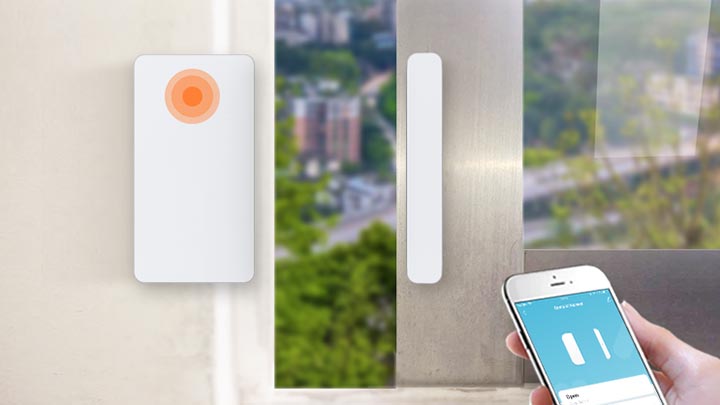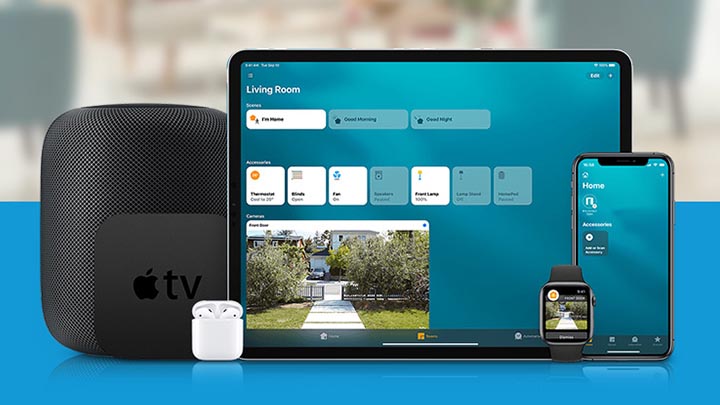An Overview of Door Sensors: Types and Applications
Door sensors are essential components of modern security and automation systems. They detect the opening or closing of doors, providing critical alerts for security breaches, monitoring access, or automating home devices. With advancements in technology, door sensors have diversified in design and function, making them suitable for various use cases.
What Are Door Sensors?
A door sensor is a device that detects and reports the status of a door—whether it is open, closed, or tampered with. Typically, these sensors are part of a larger system, such as a home security network, smart home automation, or industrial monitoring.
Types of Door Sensors
1. Magnetic Contact Sensors
- How They Work: These are the most common type, consisting of two parts: a magnet and a reed switch. When the door is closed, the magnet aligns with the reed switch, completing the circuit. Opening the door breaks the circuit, triggering an alert.
- Use Cases: Home security, office access monitoring, and automation.
- Advantages: Simple design, cost-effective, reliable.
2. Infrared Sensors
- How They Work: These sensors use infrared (IR) beams to detect motion or changes in light. If the IR beam is interrupted by a door opening, the sensor is activated.
- Use Cases: Advanced security systems, automatic door opening mechanisms.
- Advantages: No physical contact needed, suitable for high-traffic areas.
3. Pressure Sensors
- How They Work: Pressure sensors are installed on floors or door thresholds. When someone steps on the sensor or applies pressure, it detects the movement.
- Use Cases: Commercial entrances, luxury home automation.
- Advantages: Hidden installation, can detect unauthorized entries.
4. Ultrasonic Sensors
- How They Work: These sensors emit ultrasonic waves and monitor the changes in reflected sound waves caused by door movements.
- Use Cases: High-security zones, advanced automation.
- Advantages: Accurate, can detect subtle movements.
5. Vibration Sensors
- How They Work: These sensors detect vibrations or impacts caused by attempts to open or tamper with a door.
- Use Cases: Safeguarding sensitive areas, detecting forced entries.
- Advantages: Ideal for tamper detection.
6. Smart Sensors with Wi-Fi or Zigbee
- How They Work: These sensors use wireless technology to connect with smart home hubs or mobile apps, enabling real-time alerts and remote monitoring.
- Use Cases: Smart homes, IoT-integrated systems.
- Advantages: Remote control, easy integration with other devices.
7. Glass Break Sensors
- How They Work: Often paired with door sensors, these detect the sound or vibration of breaking glass, offering an additional layer of security.
- Use Cases: Sliding doors, glass entryways.
- Advantages: Protects against break-ins involving glass panels.
Key Features to Look For in Door Sensors
- Ease of Installation: Magnetic and wireless sensors are typically easier to install.
- Wireless Connectivity: Smart sensors with Wi-Fi, Zigbee, or Z-Wave are highly versatile.
- Battery Life: Long-lasting batteries reduce maintenance.
- Tamper Detection: Ensures the sensor works even if someone tries to disable it.
- Integration: Compatibility with existing security or smart home systems is essential.
Applications of Door Sensors
1. Home Security
Door sensors form the first line of defense in preventing unauthorized entry. They send alerts to homeowners or security services when a breach occurs.
2. Smart Home Automation
In smart homes, door sensors are used to trigger automation, such as turning on lights when the door opens or adjusting the thermostat.
3. Commercial Security
Businesses use door sensors to monitor access to restricted areas, track entry times, and ensure workplace safety.
4. Industrial Applications
Factories and warehouses use door sensors to manage logistics, ensure safety, and monitor the movement of goods.
5. Retail Security
Retail stores use these sensors to reduce theft and track customer entries.
Top Brands for Door Sensors
- Ring: Known for compatibility with smart home systems and real-time alerts.
- ADT: Offers reliable sensors integrated with comprehensive security solutions.
- Honeywell: Provides robust sensors for residential and commercial applications.
- Fibaro: Specializes in smart home sensors with sleek designs and versatile features.
Conclusion
Door sensors are versatile devices that enhance security, improve convenience, and integrate seamlessly with modern technology. By understanding the different types and their applications, you can select the right sensor for your needs, whether it’s for safeguarding your home, automating everyday tasks, or monitoring business activities. With the growing adoption of smart technology, door sensors are becoming an indispensable part of modern living.




